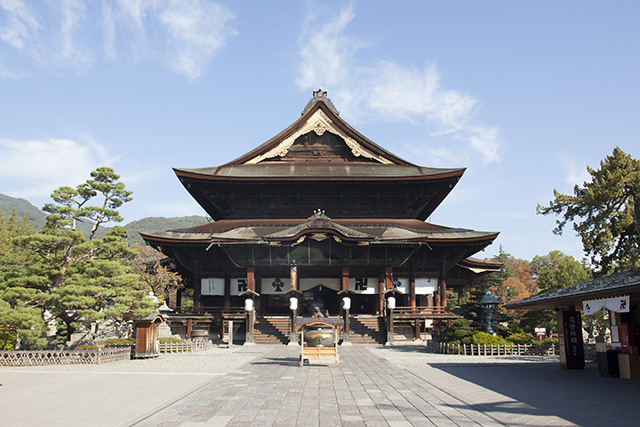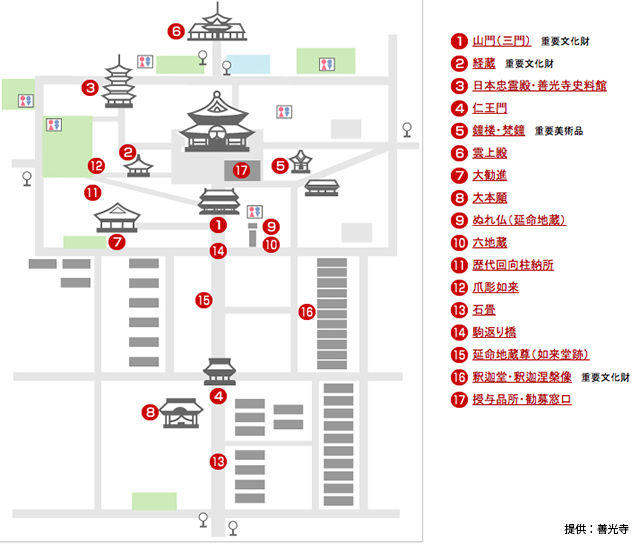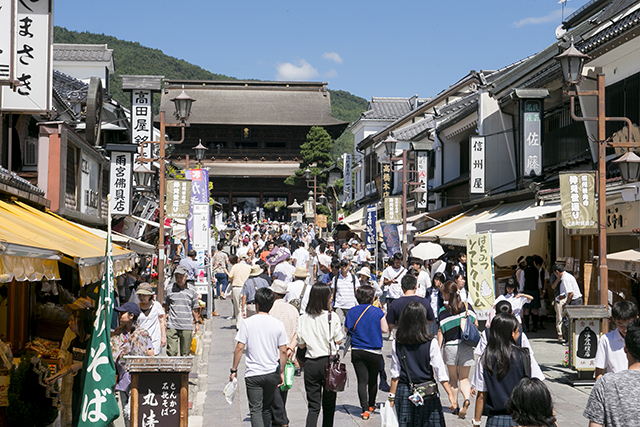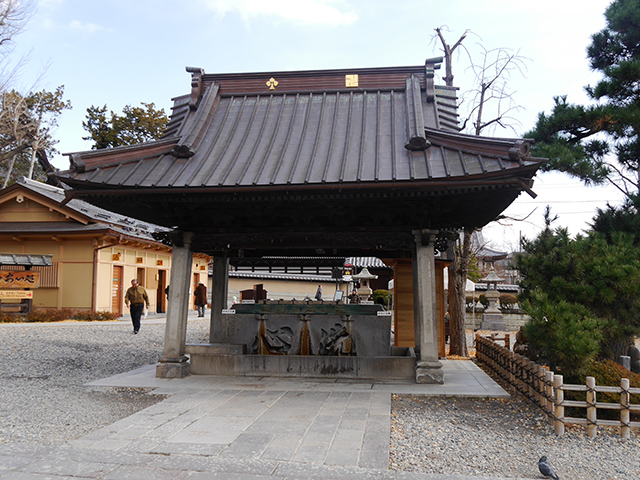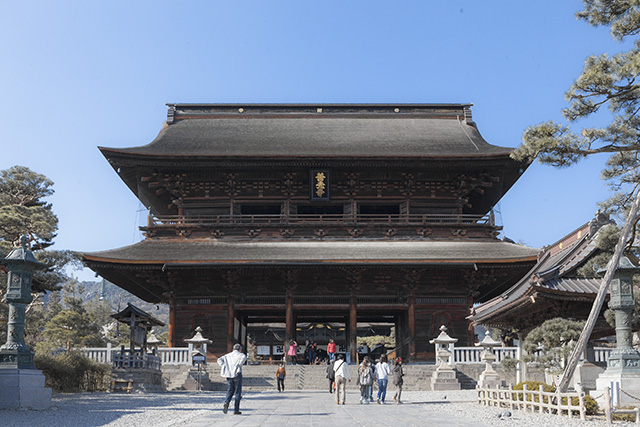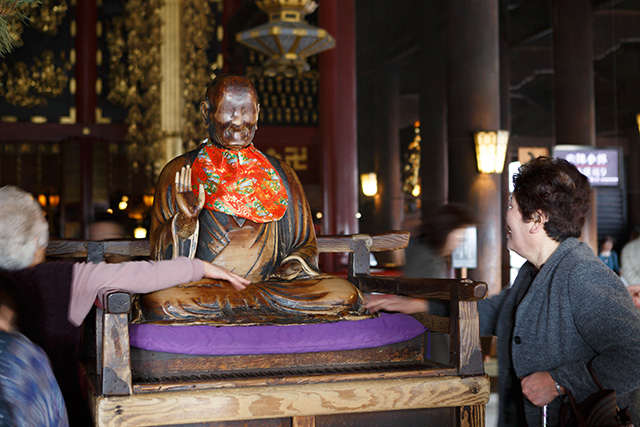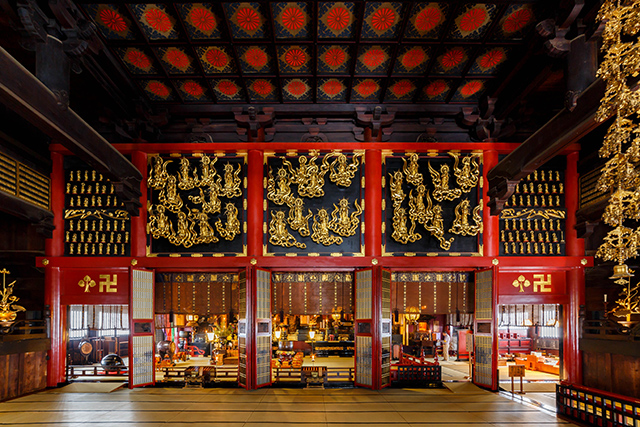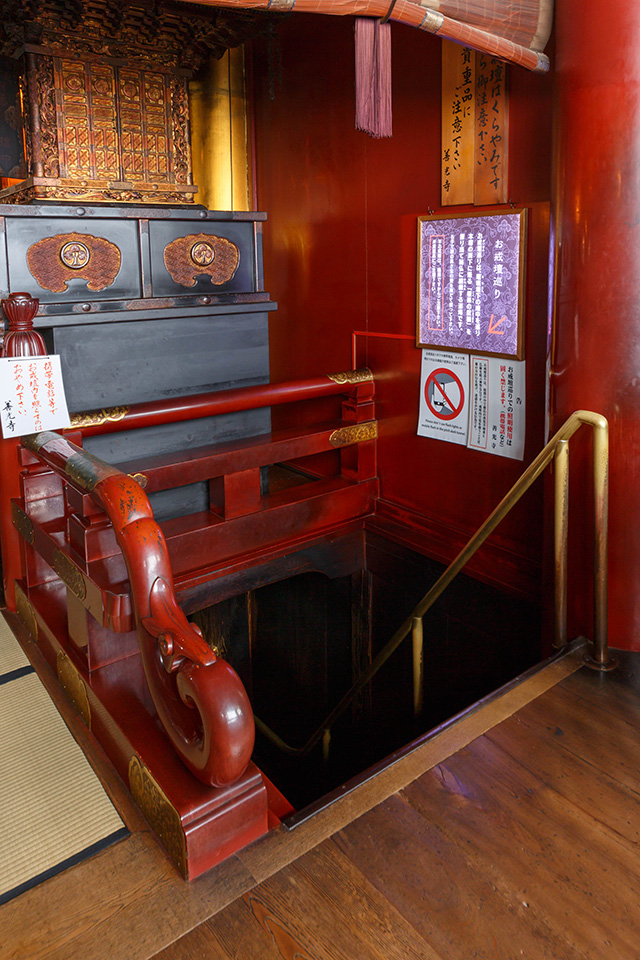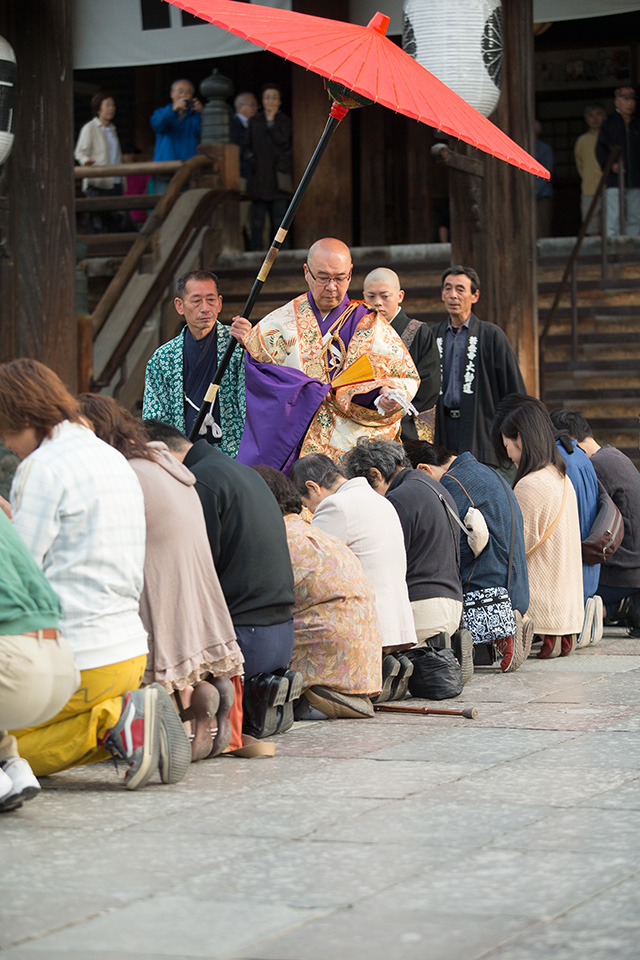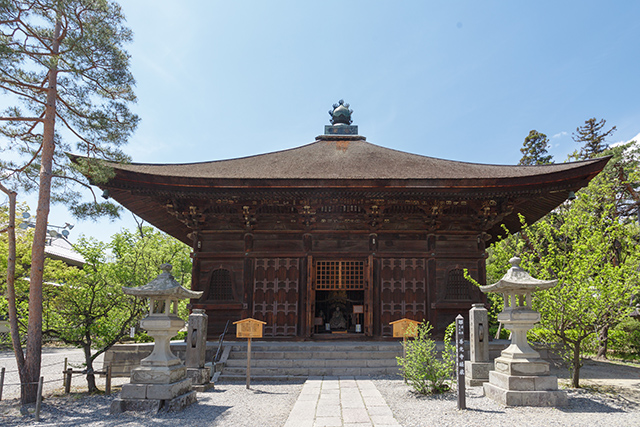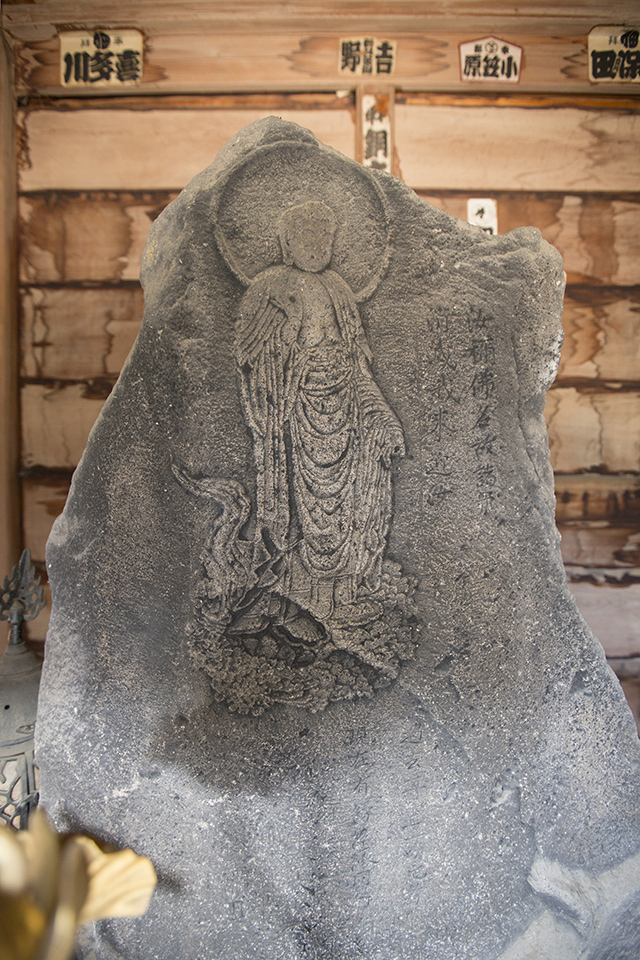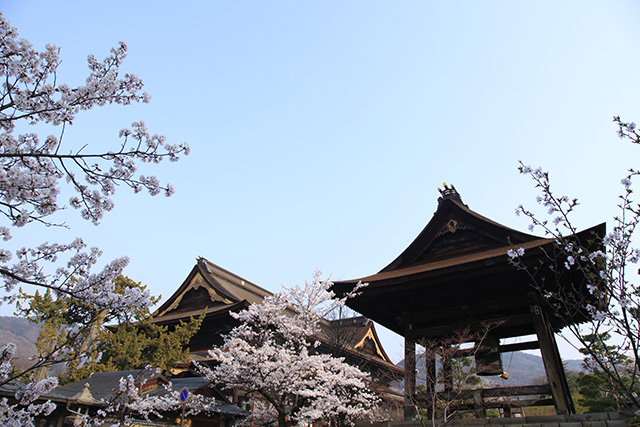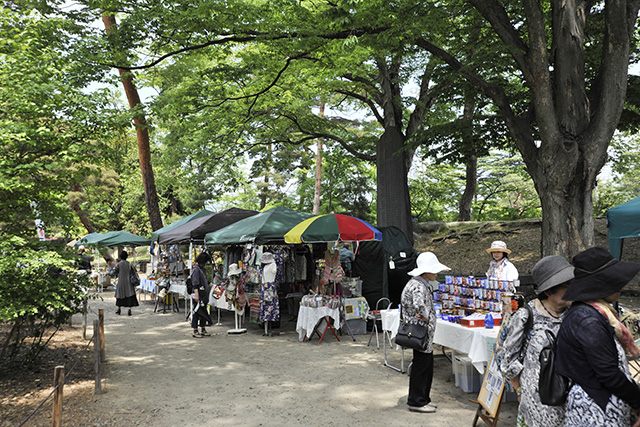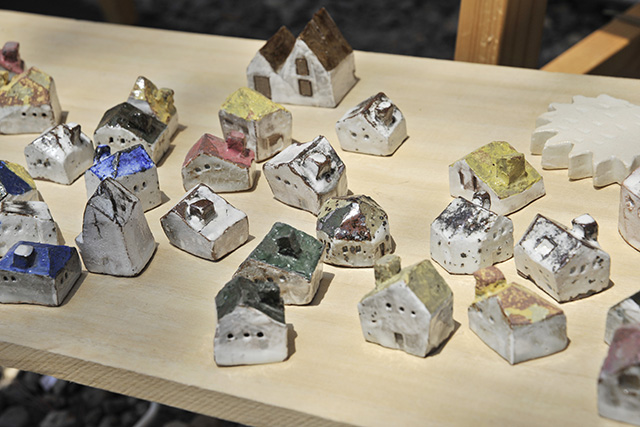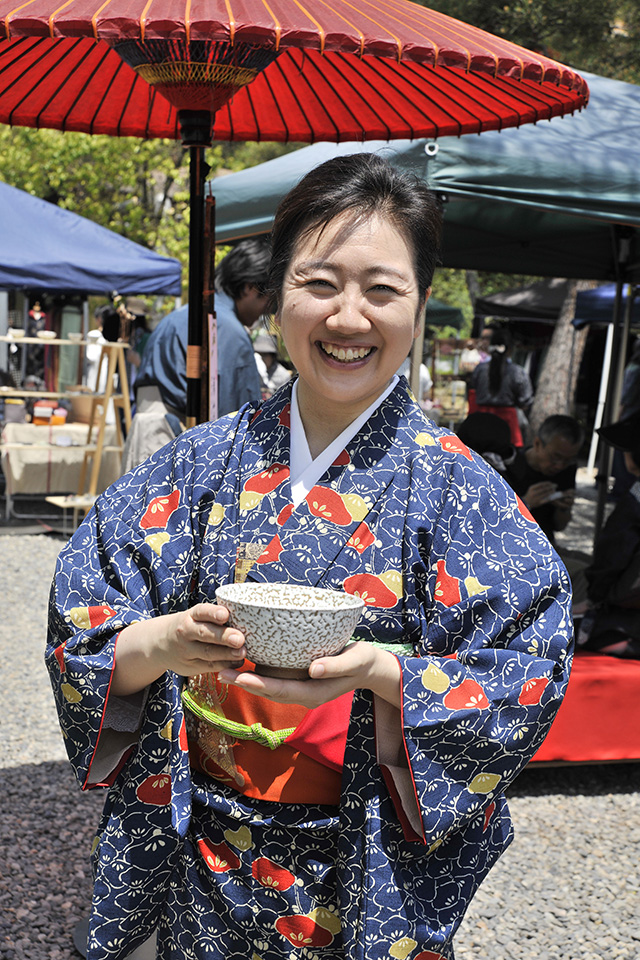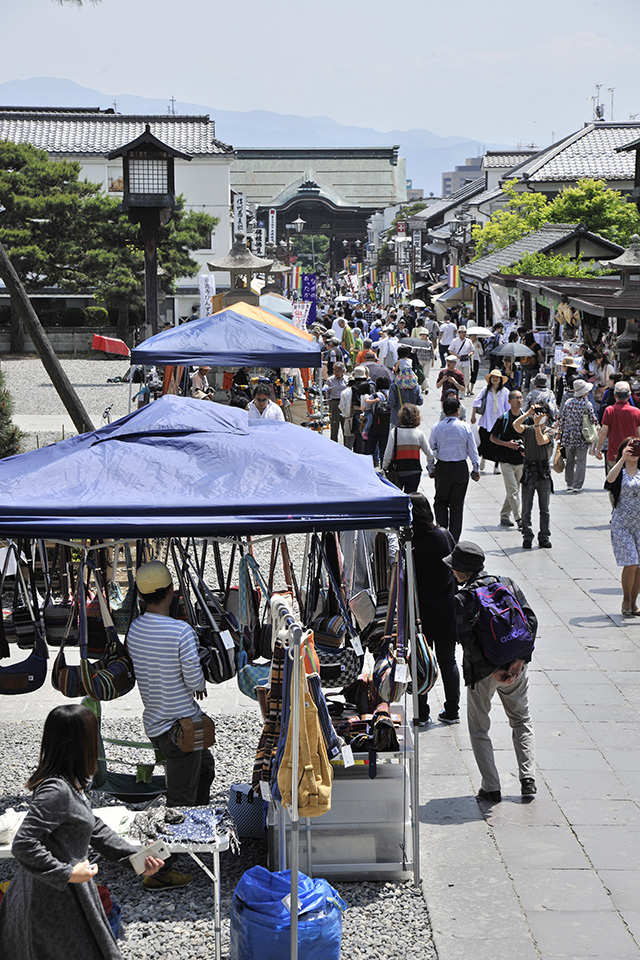Food and Restaurants
With over 1400 years of history since its original construction, Zenkoji Temple is said to hold Japan’s oldest buddha statue, a statue to Amida Nyorai (Amitabha Tathagata) which serves as the temple’s principal image. As a temple of the common people, all visitors are welcome regardless of religious denomination, and Zenkoji attracts many visitors from throughout the nation and around the world.
Let’s embark upon a visit to the remarkable spiritual site of Zenkoji Temple.
▼Temple Grounds Map
Cross the Zenkoji traffic signal to begin your temple visit. Did you notice that the characters of the street sign for “Zenkoji” are curiously stylized..?
Daihongan
Upon entering the temple grounds, Daihongan Temple is located immediately to the left. Since its original construction, it has served as a residence for the high priestess, and hosted visitors affiliated with the imperial family. The squeezable “Hitonigiri Jizo” amulets are popular.
Pilgrim Lodgings
Across from Daihongan are rows of pilgrim lodgings. At Zenkoji Temple, there are a total of 39 lodgings, consisting of 25 Tendai sect and 14 Jodo sect. Some of the lodgings serve shojin-style Buddhist vegetarian cuisine, and allow visitors to try activities such as transcribing sutra scripts, or making juzu (prayer beads). Shuin (commemorative seals) are offered to pilgrims as well.
The Niomon Gate
The Niomon Gate consists of two guardian statues facing each other -- “Agyo” on the left and “Ungyo” on the right. The two statues, together with the guardian deity of the three jewels and three-headed Daikoku behind the statues, were created by Koun Takamura (father of Kotaro Takamura) and Unkai Yonehara.
The Agyo and Ungyo statues are placed opposite their typical orientation, a design thought to allow the winter solstice sunrise to first illuminate the Agyo, which symbolizes the beginning of all, whilst the last rays of the sunset will be cast over the Ungyo, which symbolizes the end of all.
The temple’s shopping street (Nakamise Dori)
Passing through the Niomon Gate leads to the temple’s shopping street (Nakamise Dori). Here visitors will find a collection of souvenir shops, dealers of buddhist altar fittings, and restaurants. This is an ideal spot to take a break and enjoy treats such as miso flavored ice cream and oyaki dumplings.
Underfoot, the path from the temple ground entrance to the main gate is paved with flagstones, said to be exactly 7,777 in number.
Enmei Jizo Son
Enmei Jizo Son is located on the left hand side, about half-way through the Nakamise Dori shopping street. Since the inauguration of Zenkoji, the main temple hall (hondo) was located here until its relocation in the Edo Period. As if to face the statue of Jizo, the Seson-in Shakado Temple is located at the intersection of the alleyway.
Seson-in Shakado Temple
The Seson-in Shakado Temple centrally worships Japan’s only life-sized reclining Buddha statue, a nationally designated important cultural property. The Buddha looks over our world, while the Amitabha Tathagata at the Zenkoji main temple hall looks over the afterlife. It’s thought that worshipping both statues will bestow happiness in one’s present life and afterlife.
Roku Jizo (Six Jizo) and Nure Botoke
The six Jizo are bodhisattvas (Buddhist saints) who save people in the six realms: the hell realm (naraka), the purgatory of hunger (preta), the purgatory of animal passion, the Asura realm, the human realm, and the heaven realm. The Nure Botoke is said to have comforted the soul of Oshichi the greengrocer burned during the great Edo fire. For this reason, it is also known as “Nure Botoke of Oshichi the Greengrocer”.
Daikanjin Temple
Daikanjin Temple is located across from the Six Jizo. The chief priest at Daikanjin Temple is called “okanshu-sama”, and together with the high priestess of Daihongan Temple, also serves as a head priest of Zenkoji Temple.
Chozusha (Purification Basin)
Ahead lies the main gate, meaning that we are almost to the main temple hall. Before the main gate is a basin for purifying one’s hands and mouth. Use the dipper to pour water on your left hand, then your right hand. Now use the water in your left hand to rinse your mouth. Finally, clean the left hand once again, then use the water remaining in the dipper to clean the handle.
Sanmon Main Gate (Third Gate)
The Sanmon (alternatively written with the kanji characters for “mountain gate” or “third gate”) is Zenkoji Temple’s main gate, built in year 3 of the Kan-en Era (1750). Atop the gate is a plaque entitled “Zenkoji”, also known as the “Pigeon Plaque” as there are five pigeons hidden among the three kanji characters. Don’t you think that the first kanji character, “Zen”, resembles an animal with deep affinity for the temple? You can visit the top to worship, providing an exceptional view of the entry leading up to the gate.
Daikoro (Great Incense Burner)
It is believed that wafting the smoke from the great incense burner over the body will bestow good health and ward away illness. Try this before worshipping at the main hall.
Zenkoji Hondo (Zenkoji Main Temple Hall)
Now take this opportunity to worship at Zenkoji Hondo, a national treasure of Japan.
Binzuru Sonja Statue
You may have noticed many worshippers laying hands on a statue at the front entrance of the hondo (main temple hall). This statue is called “Binzuru Sonja”. It’s believed that touching the statue in the same place as your own ailment can cure you, and the statue has been worn smooth by the hands of worshippers. This remarkable cultural site has been awarded three Michelin stars.
Sanctum and Statues of 25 Bodhisattvas Welcoming Departed Spirits
Pilgrimage of the Ordination Platform
@Zenkoji
When visiting Zenkoji Temple, take the opportunity to perform a pilgrimage of the ordination platform. A stairway from the inner sanctum leads down into a completely dark passageway. Follow the wall with your hands to find the “Key to Paradise” located directly below where the ordination platform is enshrined. Touching the key is said to align you with the ordination platform, promising a rebirth in paradise.
Memento House (Juyohinjo)
After a pilgrimage of the temple main hall, visitors may receive mementoes such as amulets or prayer beads here.
Morning Ritual (O-Asaji) and Rosary Blessing (O-Juzu Chodai)
A morning ritual is held every day at the Zenkoji Temple main hall (hondo). The ritual is conducted by two Zenkoji head clergy, who travel up and down the temple approach, touching the heads of gathered worshippers with their juzu (rosaries of prayer beads) and sharing a blessing. This is known as “O-Juzu Chodai” (rosary blessing). Zenkoji Temple is perhaps best known for this signature morning ritual. By all means, please attend and participate.。
Scripture House (Kyozo)
@Zenkoji
This scripture house was built in year 9 of the Horeki Era (1759). It stores the “Issaikyo”, a complete collection of Buddhist scriptures. It is said that pushing the wooden arm to rotate the octogonal scripture shelf can bestow a blessing similar to reading the entire scriptures. This building is currently closed to worship due to ongoing construction.
Nail-Carved Amida Nyorai Sculpture
@Zenkoji
Across from the memorial pillars is an altar with a sculpture of Amitabha Tathagata carved from stone. Legend tells that the monk Shinran engraved the sculpture with his fingernails. Since olden times, it has been believed that this sculpture wards off eye disease.
Bell Tower (Shoro)
This bell tower is located to the right-hand side of the temple main hall front entrance. The temple bell was forged in year 7 of the Kanbun Era (1667) and is rung on the hour from 10:00 am to 4:00 pm every day.
East Garden (Higashi Teien)
The east gardens, located on the east side of the temple main hall, are a beautiful place for a short break.
Changing Season Ritual (Setsubun-E)
Zenkoji Temple Summer Ennichi Festival (Obon Ennichi)
During the “obon” period in August, a summer festival centered about the bon dance is held in the Zenkoji Temple grounds. The nostalgia of joining a bon dance circle in the cool of the evening air is an unmistakable delight.
Binzuru Fair (Zenkoji Binzuru Ichi)
The Binzuru Fair is held on the second Saturday of every month from April to November. All manner of handmade items are available, from locally harvested fruit and vegetables to handcrafts and baked goods. Take your time browsing and you just might find a special keepsake.







